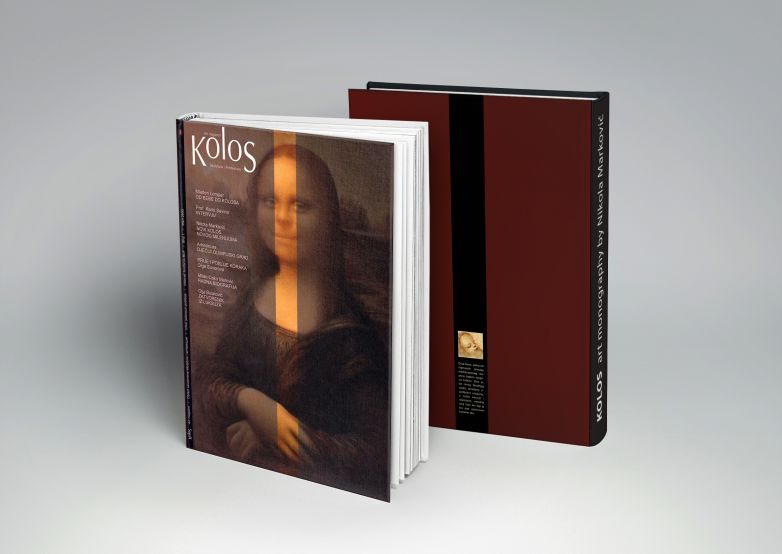- Published in Publications
Mladen Lompar 1998
FROM A BABY TO THE COLOSSUS
It is difficult to portray the complexity of these interactions, as well as the specifics. One that should in this case be emphasized is a winged angel, the putto, found on the graphic illustration cover of the Oktoih, the first Montenegrin printed and first Cyrillic book in the world (1492). According to a researcher of antique Montenegrin art, Dr. R. Vujicic, the nude winged angel, placed between the lion and the basilisk, symbolizes Montenegro, between two empires, the Venetian and the Turkish. One of the specifics of our renaissance art and the exceptionality in Orthodox iconography are the putto and the symbols of used by the Evangelists. This allegory can be considered a trademark or parental trace of the most important project by a modern Montenegrin artist, Nikola Markovich, the Colossus of Rhodes, which will be depicted a bit later on. Nikola Markovich is one of the youngest Montenegrin artists. He emerged at the end of a century when Montenegrin art underwent from modern to postmodern, from slow and somber exiting the zoo-graphic cannons to open, conventional dialogue. In the nineties, Montenegrin art receives startling affirmations and many artists appear with work in direct connection with the radicalism of art from developed nations, with no visible correspondence with dominating trends in Montenegrin art scene. This process only intensified with the formation of the Biennial of Cetinje, and the three already held manifestations, mostly rendered non-iconic art, creating passionate supporters, mostly thanks to the creative immobility of the “opposition”. Nevertheless, still a student of the Academy of Cetinje, Nikola Markovich, stands face to face with both processes, creating an interim in this generation and artistic conflict, creating yet another possibility. One cannot say that Markovich, stood indifferent and mute to the challenging happenings of his generation. He is actually so dominantly involved in everything, thus this determination resulted from thorough reasoning and studying of modern art. Although this choice is not, technically, completely unrecognizable, it is a matter of the fact that metaphysic experience and formation of the human embryo (his thematic determination) could not have been better presented by the artistic language. Only the subtle art handling could create the force of mysterious and childlike epidermis. This biggest enigma is shown by unadorned realism, as if he wants to deprive the right to suspicion of what is being told and expressed. Nevertheless, to be more convincing, he eliminates the “dull light of the uterus/which delivers us to birth”, and the fetus stands before us misinterpreted then it is in reality. It is not pleasing and it is on the verge of our doubt to accept Lautreamon’s words on “the big sin of order within the organism”. Markovich ensues his “day to day” research, searching for distant methods and interpreting forms. Those, with the very first cry of the fragile newborn in nature get thanks to the hand that carries out and transforms the classic drawing idiom, idolatrous contours. Close and mute speech of the newborn babies does not have to be just the aim of the virtuous drawing – at this moment, it can be the idea of what we are not worth. Further, after the bitter finding of the attempt of salvage by the transformation within his artistic creations. Utopia? Why not, because in our modernism it is the only moral value. It is the reason why one of the challenges of the destruction of the modern situation is present in Nikola Markovich’s drawings. * * * Within the project of Colossus of Rhodes, it is important to stress Nikola’s drawing as an exquisite preparation for the sculpture. The plastic three-dimensional form logically pursues, because the creature in the drawing, in free or non-defined space, in some cases depicts a prepared sketch for a statue. Nevertheless, accented volume is depicted in all of these paintings. With respect to the evolution of the sculpture, this idea is an obvious determination for the principle of esthetic efficacy and humanistic sculpture. The sculpture creation procedure is the closest to what it resembles. The illusion comes alive, creating the body of child - the colossal angel. Maybe this newborn baby angel can really replace the mythological wonder of the world.
